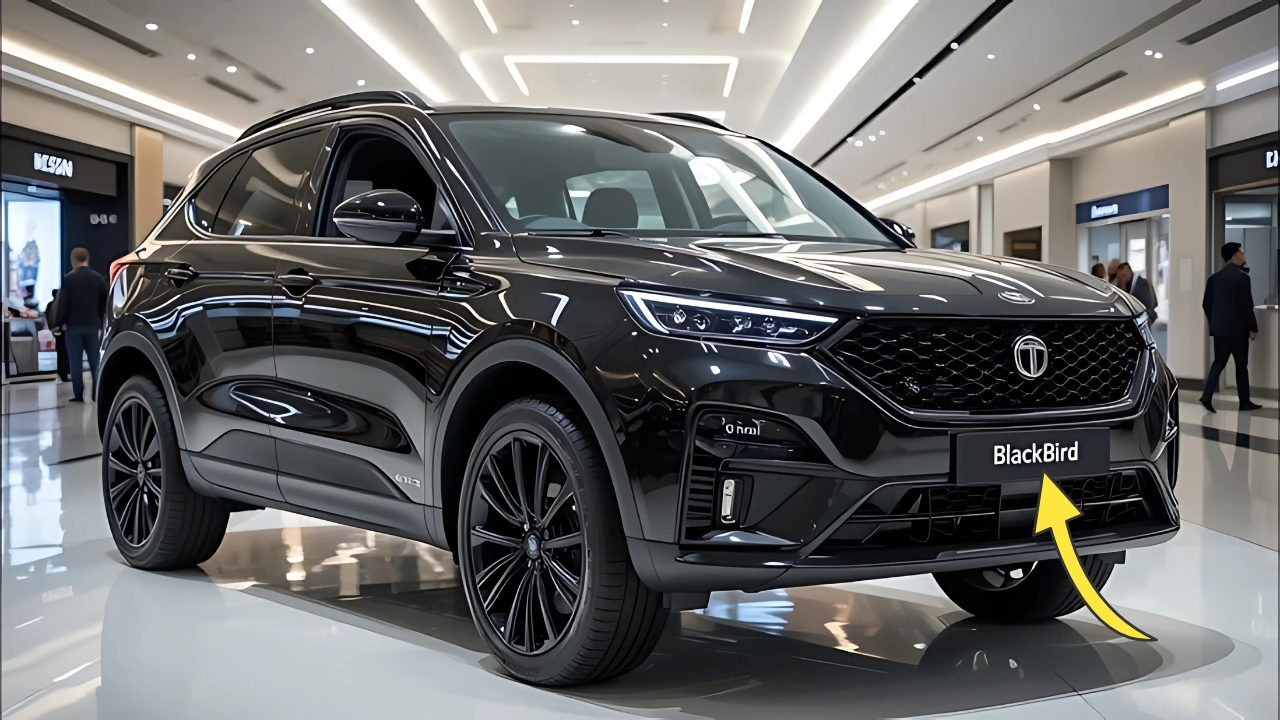Tata Blackbird : The automotive industry continues to evolve with manufacturers exploring new segments and possibilities.
The Tata Blackbird represents an intriguing concept in the premium SUV space, showcasing potential directions for the brand’s future offerings.
This comprehensive analysis examines what such a vehicle might offer in terms of design, technology, and market positioning.
Tata Blackbird Design Vision and Aesthetic Direction
A vehicle bearing the Blackbird nameplate would likely embrace sophisticated design language that communicates premium aspirations. The exterior styling could feature flowing lines and sculptured surfaces that create visual drama while maintaining aerodynamic efficiency.
The front fascia might showcase an evolved interpretation of Tata’s design philosophy, with distinctive lighting signatures creating immediate recognition.
The proportions would need to balance road presence with elegant sophistication. A long wheelbase could provide interior spaciousness while contributing to stable highway dynamics.
The roofline might feature a subtle slope toward the rear, creating a coupe-like profile without sacrificing rear headroom. Flush door handles and carefully integrated trim elements would enhance the premium appearance.
Color palette selections would likely span from deep metallics to pearl finishes that highlight the sculptural bodywork. Contrast roof options could add personalization possibilities while creating visual interest.
These design elements would collectively position the vehicle as a sophisticated choice in the premium segment.
Interior Ambiance and Luxury
The cabin environment would need to rival established luxury brands through material quality and thoughtful design. Soft-touch surfaces, genuine wood or metal accents, and premium leather upholstery could create an inviting atmosphere.
The dashboard architecture might embrace horizontal themes that enhance perceived width while organizing controls intuitively.
Seating comfort would receive paramount attention, with multi-way power adjustment, heating, cooling, and massage functions in appropriate variants.
The rear seats could offer executive-class comfort with individual climate controls and entertainment options. Ambient lighting systems would allow occupants to customize the cabin atmosphere.
Sound insulation would need exceptional attention to create a serene environment. Double-glazed windows, extensive dampening materials, and active noise cancellation could ensure conversation-friendly quietness even at highway speeds.
This refinement level would distinguish the vehicle from mainstream offerings.
Technology Integration and Connectivity
A premium vehicle would showcase cutting-edge technology throughout. Multiple display screens could provide information and entertainment access, with a large central touchscreen managing primary functions.
Digital instrumentation would offer configurable layouts presenting information according to driver preferences.
Connected car features might include remote vehicle monitoring, over-the-air updates, and advanced navigation with real-time traffic integration.
Voice assistants could understand natural language commands for various functions.
Smartphone integration would occur seamlessly, with wireless charging and multiple USB-C ports throughout the cabin.
Advanced driver assistance systems would likely include adaptive cruise control, lane centering assistance, and traffic jam assist.
A surround-view camera system with 3D visualization could simplify parking maneuvers. These technologies would enhance both safety and convenience.
Powertrain Possibilities
Engine options might span from efficient four-cylinder units to powerful six-cylinder configurations. Turbocharging would ensure strong performance while maintaining efficiency.
Mild hybrid technology could enhance fuel economy and provide electric assistance during acceleration.
Electric variants would align with global trends toward electrification. A dedicated EV platform could enable impressive range and performance while maximizing interior space.
Multiple battery options might cater to different usage requirements and budgets.
All-wheel drive capability would likely feature in higher variants, enhancing both performance and weather capability.
Advanced traction management systems could optimize power delivery across various surfaces. These drivetrain options would ensure broad market appeal.
Driving Dynamics and Comfort
Suspension technology might include adaptive dampers that adjust firmness based on driving conditions and selected modes. Air suspension in premium variants could provide height adjustment and self-leveling capability.
The focus would balance comfort with controlled body movements during dynamic driving.
Steering systems would need to provide appropriate feedback while remaining effortless during parking maneuvers. Multiple driving modes could alter throttle response, transmission behavior, and suspension settings.
The overall tuning would prioritize refinement while maintaining engaging dynamics when desired.
Noise suppression would extend beyond passive insulation to active technologies. Engine mounts might use adaptive technology to minimize vibration transmission.
Wind noise reduction through aerodynamic optimization would contribute to the premium experience.
Safety Features and Protection
Comprehensive safety systems would include multiple airbags positioned strategically throughout the cabin. The body structure would incorporate extensive high-strength steel and aluminum to create a protective cage.
Crumple zones would direct impact forces away from occupants.
Electronic safety systems might include autonomous emergency braking with pedestrian and cyclist detection. Blind spot monitoring with intervention capability could prevent lane change accidents.
Night vision systems using thermal imaging could identify hazards beyond headlight range.
Market Positioning Strategy
Such a vehicle would position itself as an aspirational choice for successful professionals and families seeking premium transportation. The pricing strategy would need to undercut established luxury brands while justifying premiums over mainstream offerings.
This positioning could attract buyers ready to upgrade from mid-market vehicles.
The vehicle might particularly appeal to those seeking alternatives to European luxury brands while supporting domestic manufacturing.
Business executives, entrepreneurs, and affluent families could form core demographics. The blend of luxury, technology, and potential value would create unique market appeal.
Manufacturing Excellence
Production would likely occur in specialized facilities with enhanced quality control processes. Paint finishing might include multiple layers with hand-finishing in critical areas.
Assembly processes would emphasize precision and consistency matching luxury market expectations.
Future Implications
Such a vehicle would represent significant brand evolution, demonstrating manufacturing capability and design sophistication.
Success could establish credentials for further premium offerings while enhancing overall brand perception.
Tata Blackbird Conclusion
The Tata Blackbird concept represents possibilities for indigenous premium vehicle development.
Through sophisticated design, advanced technology, and meticulous quality, such a vehicle could challenge established luxury brands while creating unique value propositions.
This vision demonstrates potential directions for automotive excellence that combines global aspirations with local manufacturing expertise.
